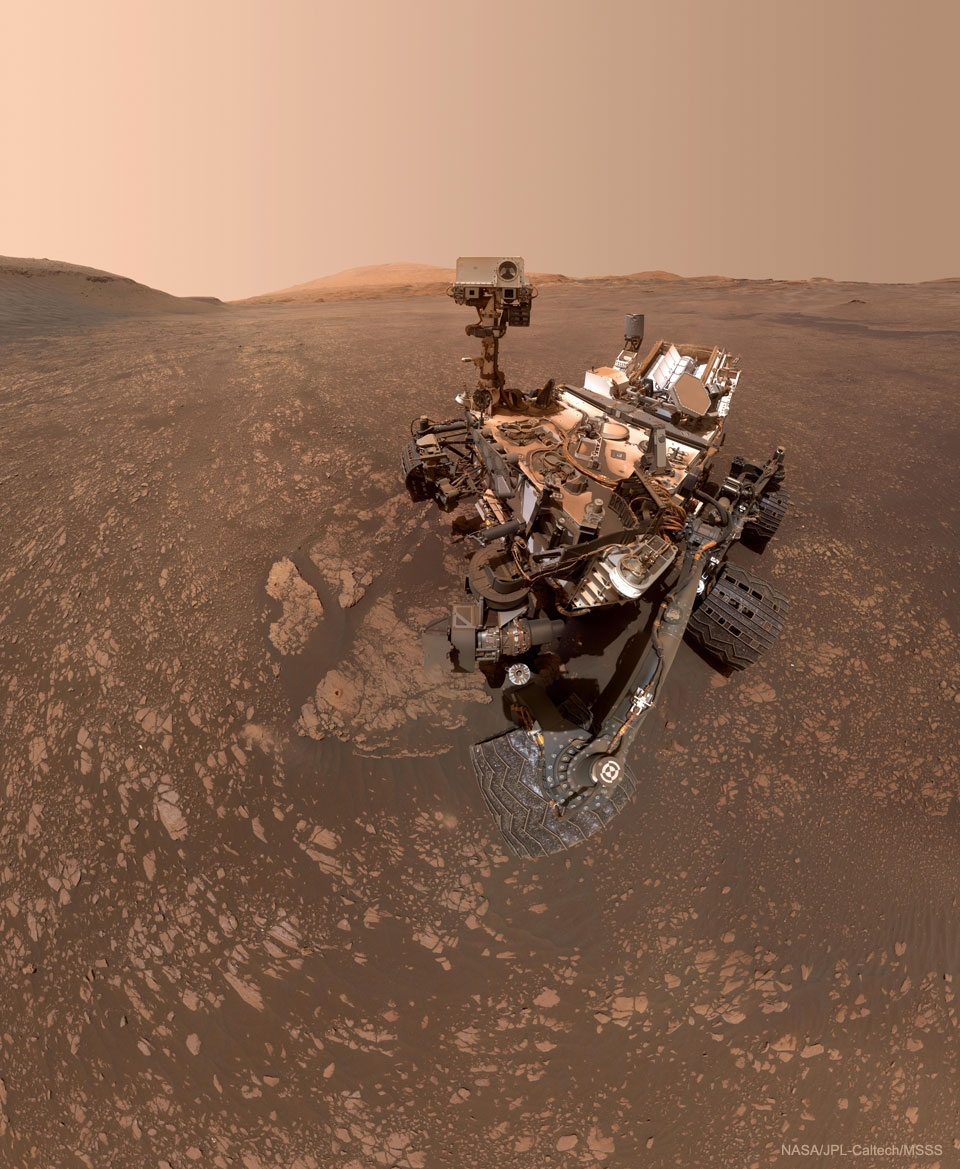2019 October 29
Curiosity Rover Finds a Clay Cache on Mars
Image Credit: NASA, JPL-Caltech, MSSS
Explanation: Why is there clay on Mars? On Earth, clay can form at the bottom of a peaceful lake when specific minerals trap water. At the pictured site on Mars, the robotic rover Curiosity drilled into two rocks and found the highest concentration of clay yet. The clay cache is considered addition evidence that Gale Crater once held water in the distant past. Pictured, 57 images taken by Curiosity have been combined into a selfie. The images were taken by a camera at the end of its robotic arm. Many details of the car-sized rover are visible, including its rugged wheels, numerous scientific instruments, and a high mast that contains camera “eyes”, one of which can shoot out an infrared laser beam. Curiosity continues to roll around and up Mount Sharp — in the center of Gale Crater — in a search for new clues about the ancient history of Mars and whether or not the red planet once had conditions that could support life.
好奇号探测车在火星上发现粘土块
影像来源:NASA, JPL-Caltech, MSSS
说明:为什么火星上会有粘土?在地球上,当特殊的矿物质兜住水时,粘土便可以在平静湖泊的底部形成。在这幅影像中的火星上,好奇号探测车在两块岩石上钻孔,发现了迄今为止浓缩度最高的粘土。这些粘土被认为是盖尔环形山在遥远的过去曾经有水存在的额外证据。这幅自拍影像是由好奇号机械臂末端的照相机所拍摄的57张照片结合而成。这辆如汽车大小的探测车的许多细节都清晰可见,包括它坚固的轮子、众多的科学仪器,以及一个装有摄像机“眼睛”的高桅杆,其中一个可以发射红外激光。好奇号继续在盖尔环形山中心的夏普山上迂回攀爬,寻找有关火星古老历史的新线索,以及火星是否曾经有过维持生命存在的条件。







